Everyone occupying a administration cloud computing position within the firm ought to be actively involved in this course of. Critical Sucess Factors discuss with actions taken to attain the enterprise goals or the causes of success. On the opposite hand, KPIs are key metrics that measure and monitor the progress of a project or enterprise. A important success issue consists of environmental components, industry-related, peer-related, management-position, and temporal elements. This article will teach you every little thing you have to learn about crucial success elements, including why they matter for your business and the method to determine them.
How Spike Might Help You In Your Next Project
While a few of your CSFs will be distinctive to your project, many come from higher administration and switch between initiatives. But no matter what yours are, here’s a four-step information to correctly identifying critical success elements in project management. While similar to key performance indicators (KPIs), which outline https://www.globalcloudteam.com/ success metrics within a project, CSFs are actions. A KPI may be hitting 50% more visitors within six months, and a CSF may be reducing overhead prices whereas sustaining high quality, together with a information for doing so.
- It considers the truth that info needs can differ from manager to manager and that those wants can even change with time.
- KPIs will assist you to understand if you’re managing all the weather correctly.
- Employee suggestions is a pivotal instrument that can significantly improve an organization’s business processes.
- These components are related to maintaining and enhancing a company’s position throughout the competitive landscape.
- You might full project goals, like building a internet site and conducting back-end optimization, however if you neglected to meet a CSF stating the budget you should stay inside, your team wasn’t profitable.
In-depth Analysis With Out Leaving The Software

It’s essential to understand your key performance areas in order to identify areas that you wish to house in on if you begin setting objectives. To return to our instance of a software program firm, in case your software is frequently experiencing bugs or downtime, an excellent success factor definition aim is to improve or scale back that downtime. If you’ve never set crucial success components earlier than, or if you aren’t even certain where to begin out in relation to strategic planning, here’s every little thing you should know to get began. Critical Success Factors (CSFs) are pivotal elements or actions which would possibly be important for a company to achieve its objectives and targets.
How To Establish Crucial Success Factors: Four Steps

When the CSF’s are combined with a whole strategic planning methodology, they function as elements which would possibly be vital to an organisation’s success. LogRocket identifies friction points within the person experience so you can make knowledgeable decisions about product and design adjustments that must happen to hit your targets. With LogRocket, you’ll find a way to understand the scope of the issues affecting your product and prioritize the modifications that have to be made. LogRocket simplifies workflows by permitting Engineering, Product, UX, and Design teams to work from the same knowledge as you, eliminating any confusion about what needs to be accomplished. CSFs additionally assist product teams assess the areas in which they excel and areas that need improvement. By holistically detecting the faulty key success areas, they will introduce tweaks to the process and construct better merchandise during subsequent phases.
Almost all managers have some monitoring CSFs – for instance, financially oriented CSFs similar to performance versus budget or price incurred. Environmental factors are typically the areas over which a corporation has little control. Depending on the nature of the enterprise, some corporations may be delicate to further components similar to population trends, regulatory developments, and power sources. Likewise, the geographic positioning of the corporate also can generate CSFs. For example, a enterprise operating in a remote space might have transportation administration as a CSF whereas the identical may not be crucial for city companies. Typically, profit margins are low, and supermarkets must take note of many different factors but these 4 areas kind the core factors of profitable operation.
These factors relate to internal administration practices and organizational capabilities essential for fulfillment. They embrace leadership high quality, strategic planning, useful resource allocation, and organizational tradition. Effective communication, robust management, efficient useful resource administration, and fostering a optimistic company tradition are examples of management CSFs. What rivals do and how their success or failure impacts crucial success elements of other organizations.
Proactively labeling and monitoring environmental factors is an efficient way to get ahead of any potential issues sooner or later and forestall pointless risk. KRAs stand for key end result areas—these are focus areas you identified in your strategic plan. For example, a key outcome area for your small business could be “profitability” or “efficiency.” Then, whenever you set objectives, describe precisely what you should improve in those areas.
The enterprise panorama is dynamic, and your CSFs ought to evolve to reflect changes available within the market and internal enterprise processes. Leveraging a centralized platform like Creately can facilitate the continuous monitoring and updating of CSFs, making certain they proceed to be relevant and impactful. The finest practice is to outline not extra than 5 per deliverable, although there could additionally be a few more depending on the scale and scope of the project. If there are too many critical success elements, it turns into difficult to keep observe of each of them. Different deliverables could have different important success components, and these factors culminate to qualify the hassle as either a hit or a failure. Therefore, if a deliverable is the goal, a critical success issue is what is needed to satisfy this goal.
The latter are outcomes of a project or achievements of an organization needed to consider the project a success or the group profitable. Success standards are outlined with the objectives and could also be quantified by key performance indicators (KPIs). Assigning management management over each important success issue to a specific individual is effective. Thoroughly brief the assigned individuals about their obligation to facilitate the success and progress of the company’s strategic objectives and objectives.
They can constantly change relying on the business dynamics, the aggressive place of a agency and other situational elements (see next section). To overcome the shortcomings of the above approaches, the CSF technique focuses on individual managers and every manager’s present data needs – both onerous and gentle. It considers the fact that information wants can differ from manager to manager and that these wants can even change with time. Ronald Daniel of McKinsey & Company in 1961 [1] and additional developed into critical success components by John F. Rockart of the MIT Sloan School of Management in 1979 [2].
A good teamwork is the key to success, when all the employees collaborate more ideas and opinions could be discussed to search out the best way to realize success. To use the CSFs every thing needs to be planned, how staff will do it and why. Key end result areas or KRAs discuss with the rules for a specific role in a company. The terms highlight the scope of the job profile for the employee, enabling them to have a better view of their possible position in the firm. The goal is increased operating revenue, the CSFs are how you’ll attain that goal, and the KPIs are used to measure whether or not the CSFs are fulfilled and the general objective reached.
CSFs include quality service, improved advertising methods, and elevated buyer satisfaction, while KPIs embody project administration metrics such as project ROI and employee satisfaction score. With the assistance of important success components, an organization can focus better on a few key areas that guarantee a strategic objective. Without figuring out these key success components in broad phrases, you’ll wrestle to know when you achieve your project objectives and differentiate wins from losses. These crucial success factors are issues your group has no direct management over—though that doesn’t make them any less valuable.
Think of a CSF as a task that needs to be executed for the product to be successful. Critical success elements vary from project to project, so you need a software that can do it all. Good project management requires a powerful project administration tool to make certain that your project is a hit. ProjectManager.com gives your team all of the instruments they should collaborate on critical success factors and improve their efficiency. Be careful to not confuse important success elements with metrics of success. These metrics already exist as KPIs (key efficiency indicators) and important success elements serve another purpose.
CSFs align organizational efforts with strategic goals, guaranteeing that actions and initiatives contribute on to achieving long-term goals. Critical Success Factors (CSFs) are the vital thing areas, actions, or variables that should be targeted on and effectively managed to make sure the success of a enterprise or project. They symbolize the few key elements that are critical for attaining desired outcomes and aggressive benefit. Critical success components (CSFs) — also known as key results areas (KRAs) — are crucial for any product group to attain success. CSFs help the product team define the areas, actions, and steps which might be completely essential to realize success.
